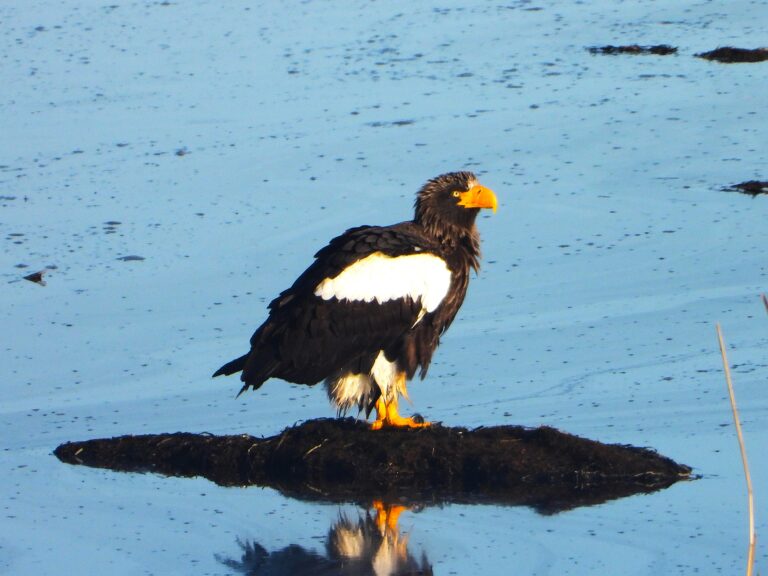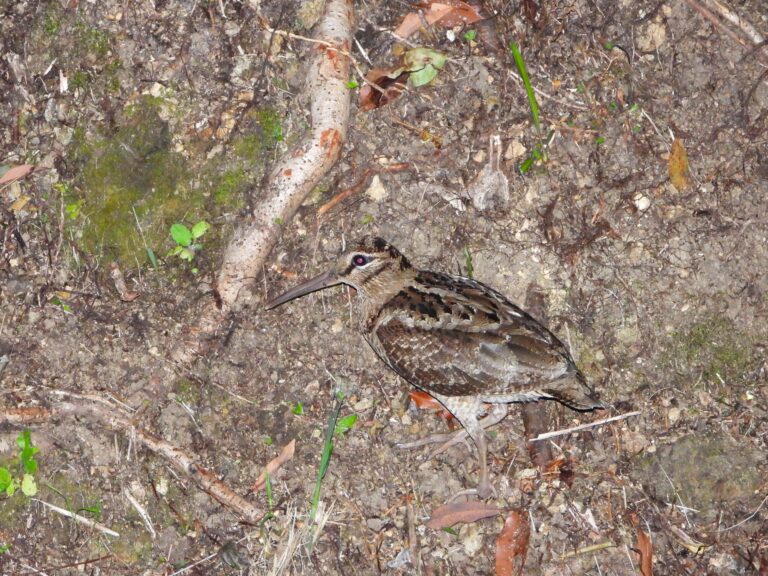Mountain Hawk-Eagle (Nisaetus nipalensis) – Wildlife of Japan
Introduction
The Mountain Hawk-Eagle, known in Japanese as Kumataka, is a large forest-dwelling raptor and a flagship of healthy mountain ecosystems in Japan. It is a year-round resident that breeds in extensive, mature forests and is highly sensitive to human disturbance, which is why it features prominently in national conservation policy.
Appearance
In Japan, males average about 72 cm in length and females about 80 cm; the wingspan ranges from 140–165 cm. The wings are broad and relatively short for maneuvering through trees, and the tail is long with bold dark bands. A short crest gives the head a crowned look. Juveniles are paler below and attain adult plumage over several years.
Habitat & Distribution
This species occupies mountainous, well-forested landscapes from low montane to subalpine zones, favoring mixed or broadleaf forests with large trees, deep valleys, and steep terrain. In Japan, it is a non-migratory resident from Hokkaido through Honshu, Shikoku, and Kyushu.
Where to See in Japan
Look for soaring or ridge-hopping birds over mature mountain forests with complex structure (broadleaf or mixed stands rather than uniform plantations), especially near cliffs, ridges, or large trees suitable for nesting. Maintain distance to avoid disturbance, particularly near known territories.
Behavior
Pairs hold territories year-round. Courtship flights with steep dives and calls begin in autumn. The bird flies by soaring along ridges or making agile strikes inside the forest.
Diet
A generalist predator of forest wildlife: main prey in Japan include hares, pheasants (e.g., Copper Pheasant, Green Pheasant), snakes, squirrels, flying squirrels, martens, rodents, and medium-sized birds. Its varied diet shows its role as a top predator in intact forest food webs.
Reproduction
Typical annual cycle in Japan: courtship in Oct–Nov; nest building Jan–Feb; egg-laying Apr–May; hatching May–Jun; fledging Jul–Aug (with regional variation). Nests are large platforms on major limbs of tall trees and are often reused. Disturbance near nests reduces breeding success.
Conservation
In Japan (N. n. orientalis), the species is classified as Endangered (EN) on the Environment Ministry Red List and protected under the Species Conservation Act. Globally it is listed as Near Threatened (NT) by the IUCN. Main threats include loss of mature forest and disturbance at nest sites. Conservation actions focus on retaining old forest tracts, buffer zones around nests, and long-term monitoring.
Author’s Impression
During one of my mountain trips, I spotted a Mountain Hawk-Eagle calling across a small lake deep in the forest. It truly looked like the king of the mountains. I was also fortunate enough to encounter a juvenile on another day — sightings like these are rare and unforgettable.








